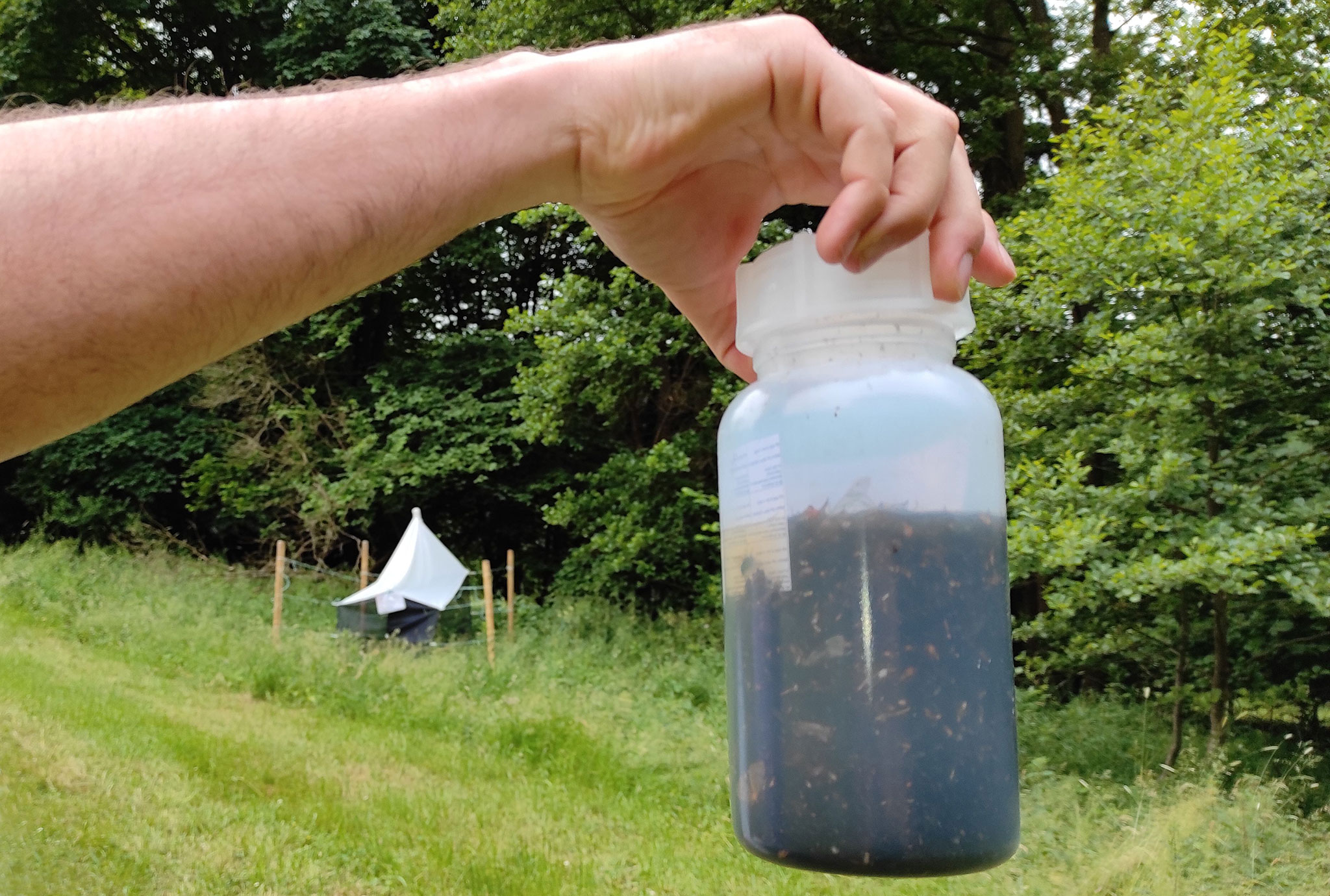New digital storage platform: a milestone in biodiversity monitoring
 Insects that are netted during biodiversity monitoring are analyzed using DNA metabarcoding methods. The ASV Registry now allows data from previously unknown and neglected species to be stored and analyzed via the genetic fingerprint (DNA barcode). © LIB, V. Rduch
Insects that are netted during biodiversity monitoring are analyzed using DNA metabarcoding methods. The ASV Registry now allows data from previously unknown and neglected species to be stored and analyzed via the genetic fingerprint (DNA barcode). © LIB, V. Rduch
Thousands of animal species live in Germany that have hardly been scientifically analyzed, if at all. DNA metabarcoding is an effective and important tool for identifying species and greatly accelerates the process of species determination for scientists and environmental authorities. Until now, there has been a lack of a centralized management and storage platform for such data. This storage platform, the ASV Registry, has now been developed by scientists at the LIB as part of the ‘GBOL III: Dark Taxa’ project. The study has now been published in the journal Metabarcoding and Metagenomics.
The project ‘GBOL III: Dark Taxa’ project aims to collect the genetic fingerprints, the so-called DNA barcodes, for species that have been missing and neglected to date. The reasons for this scientific neglect are diverse: the species are difficult to identify on the basis of their appearance, as they are often only a few millimeters in size. Observation is therefore also difficult. The ecological role of these species is also barely known.
In order to be able to use the genetic fingerprints effectively, they have so far been recorded in a reference database. This reference database combines the name and the DNA barcode. The new ASV Registry platform provides the counterpart to this reference database: all genetic fingerprints found in environmental samples are stored long-term and kept for research purposes, regardless of whether they have already been recorded in the reference database or not. This means that the fingerprints can also be assigned later if the genetic fingerprints for other species are only gradually uncovered.
At the same time, the new platform provides an archive of which species have left their traces at what time and where. ‘The LIB thus also fulfils one of its main tasks: researching and documenting biodiversity change,’ emphasizes Dr Vera Rduch, coordinator of GBOL III: Dark Taxa. ’Together with the reference database for Germany set up by the GBOL project, the registry represents a central and sustainable access point for all metabarcoding data generated in GBOL and is thus one of the central systems in GBOL for the provision of research data in accordance with the FAIR criteria.’
The ASV Registry is a milestone in biodiversity monitoring as it provides a comprehensive overview of the organisms contained in the samples. This is achieved by storing the DNA barcode of each object in the samples, which enables a clear assignment after a recovery, regardless of whether the object has already been identified to species level.
The study in the journal Metabarcoding and Metagenomics describes the important function of the ASV Registry and its important contribution in providing easy access to previously published data. In this way, the research results are documented, comprehensible and available to other researchers.
DNA metabarcoding enables the routine identification of species and the analysis of species composition in environmental mass samples and is often used, for example, for monitoring in LIB environmental protection projects. If well-curated reference data is available, this method can provide comparable results and outperform conventional species identification by human experts in terms of quantity and speed. With the registry, centralised and structured storage of metabarcoding data is possible on a large scale for the first time. All data can be retrospectively transferred to the registry.
The new data and storage platform ASV Registry is intended to pave the way for the efficient and effective use of metabarcoding data, which until now has been stored in different journals. By providing a platform on which researchers can archive, analyse and ultimately publish metabarcoding data from all projects, the scientists involved have created a crucial tool that will make comparative and collaborative DNA metabarcoding research and biodiversity monitoring fit for the tasks of the future.
Dr. Sarah Bourlat, Head of the Metabarcoding Section at the LIB: ‘Easier access to published data and the structured publication of new data will significantly increase the collective benefit of DNA metabarcoding.’
To the original study: The ASV Registry: a place for ASVs to be (pensoft.net)


